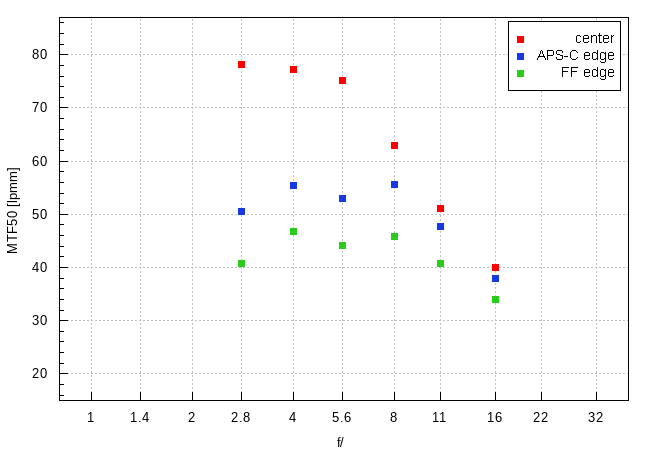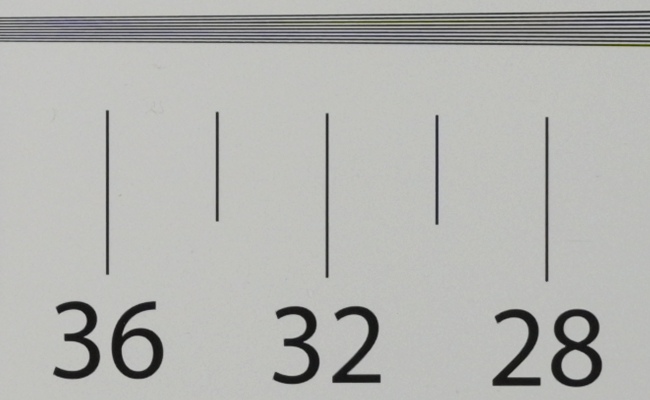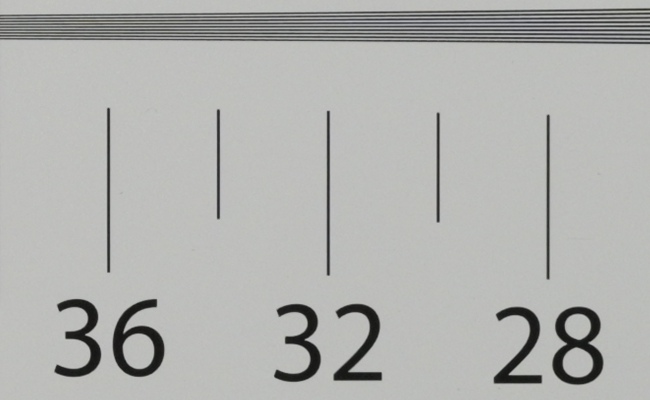Nikon Nikkor Z 26 mm f/2.8
4. Image resolution
Let's see how the Nikkor Z 26 mm f/2.8 compares – its results in the frame centre, on the edge of the APS-C/DX sensor, and on the edge of full frame presents a graph below.

Please Support UsIf you enjoy our reviews and articles, and you want us to continue our work please, support our website by donating through PayPal. The funds are going to be used for paying our editorial team, renting servers, and equipping our testing studio; only that way we will be able to continue providing you interesting content for free. |
- - - - - - - - - - - - - - - - - - - - - - - - - - - - - - - - - - - - - - - - - - - - - - - -
The performance in the frame centre is surprisingly good – the new model fares distinctly better than its older 28 mm brother which we praised a lot anyway. Mind you, here the bar is set even higher as the tested lens provides a wider angle of view and it is smaller.
The maximum resolution values you see at the maximum relative aperture – a great achievement with such an aperture and physical dimensions. Additionally, the lens is able to reach a result of over 78 lpmm, something really praiseworthy. We can say that, in case of the resolution in the frame centre the Nikkor Z 26 mm f/2.8 met our expectations and then some.
Of course there are no miracles and, with such reduced physical dimensions, there have to be some compromises. They are easy to spot on the edge of the frame. First of all, you get a quite untypical perfromance with a breakdown visible near f/5.6. It is a result of quite specific performance of different off-axis aberrations and a local maximum of chromatic aberration that happens in that place exactly.
Despite that the performance on the edge of the APS-C/DX remains relatively good. Even at the maximum relative aperture images are completely useful and the maximum results of 55 lpmm allow you to say that you get images that are beyond reproach.
The situation changes on edges of full frame. At the maximum relative aperture you land a tad below the decency level. What's more, on stopping down the lens cannot spread its wings due to that untypical performance near f/5.6. As a result, on the edge of full frame it just 'crawls' along the borderline of the decency level across the whole aperture range.
As you see there are no miracles – a lens so small cannot bowl you over with its performance on the edge of the frame. The Nikkor Z 26 mm f/2.8 should be praised nevertheless because in the frame centre it fares exceedingly well and also the edge of the smaller APS-C/DX sensor doesn't provide you any reasons to complain. The compromise, visible on the edge of full frame, was completely expectable and shouldn't surprise you at all.
At the end of this chapter, traditionally, we present crops taken from photos of our resolution testing chart which were saved as JPEG files along the RAW files, used for the analysis above
| NikonáZ7, JPEG, f/2.8 |
 |
| NikonáZ7, JPEG, f/4.0 |
 |






